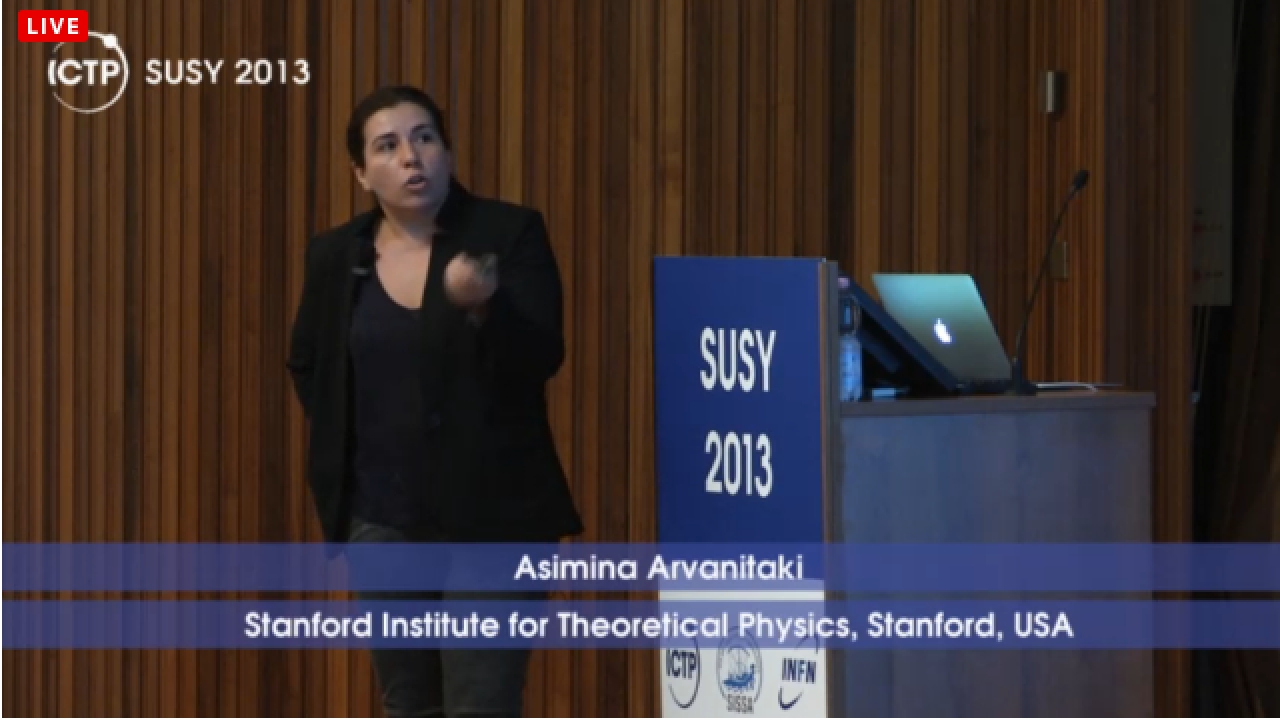
Asimina Arvanitaki's SUSY 2013 plenary talk, titled "Physics beyond the colliding particles", focussed on a new type of technology for gravitational wave detection at higher frequencies that may aid in the search for Physics Beyond the Standard Model.
Arvanitaki, who is part of the high energy theory group at the Stanford Institute for Theoretical Physics, outlined how this new technology that uses optically levitated sensors could detect gravitational waves with much more sensitivity than the laser-based gravitational wave observatories such as LIGO (Laser Interferometer Gravitational-Wave Observatory).
Optical levitation is a method in which a material is levitated by using photon radiation pressure. The radiation pressure is directed upward to counter the downward force of gravity. This creates a stable optical trap that can hold small particles, such as the sensors, in suspension. Arvanitaki explained that optically levitated cooled dielectric microspheres or microdiscs, which act as the sensors, could detect gravitational waves at frequencies higher that 100 kHz.
Although few astrophysical sources of gravitational waves are likely to exist at frequencies above 100 kHz, these sources could be associated with the early Universe and Beyond the Standard Model. One such source of gravitational waves could be the hypothetical QCD axion that is of interest as a possible component of cold dark matter. The new technology could signal a new era in astronomy, said Arvanitaki.
The live streaming of the SUSY 2013 plenary talks is available on LiveStream and RedClara (specifically optimized for Latin American and the Caribbean through the high-speed academic network).
This story is part of the Focus Feature on SUSY 2013. Go to the Focus Feature webpage for the complete coverage.













